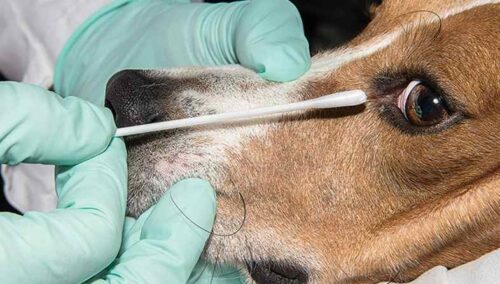Comprendre la génétique vétérinaire est crucial pour faire progresser la santé animale et les pratiques d’élevage. Une collecte efficace d’échantillons est essentielle pour une analyse génétique précise. Dans cet article, nous explorerons les avantages et les applications des écouvillons d'échantillonnage jetables dans la collecte d'échantillons vétérinaires.

Importance of Specimen Collection
Accurate specimen collection is vital in veterinary genetics. Il garantit des résultats fiables pour les tests génétiques, which can influence breeding decisions, diagnose genetic disorders, and guide conservation strategies.
Advantages of Disposable Sampling Swabs
Hygiene and Contamination Prevention
Disposable sampling swabs help prevent cross-contamination between samples. Each swab is sterile and used only once, ensuring that the genetic material collected is uncontaminated and reliable.
Facilité d'utilisation
These swabs are designed for ease of use, making them ideal for veterinarians and researchers. They require minimal training and are often preferred due to their simplicity and effectiveness.
Cost-Effectiveness
Using disposable swabs is cost-effective. They eliminate the need for cleaning and sterilizing reusable equipment, reducing labor and resources needed for specimen collection.
Cliquez ici pour MEIDIKE GENE Specimen Collection Swabs information.
Applications in Various Animal Species
Domestic Animals
In domestic animals like dogs and cats, swabs are used to collect DNA for testing hereditary diseases, determining parentage, and selecting breeding pairs.
Livestock
For livestock, genetic testing helps improve traits such as milk production, growth rates, and disease resistance. Swabs offer a quick and efficient method for collecting samples from large herds.
Conservation de la faune
In wildlife conservation, swabs are used to gather genetic information crucial for preserving endangered species. They help track genetic diversity and manage breeding programs.

Best Practices for Using Disposable Swabs
Techniques de collecte appropriées
Ensure samples are collected from the appropriate site (Par exemple, cheek cells) to maximize DNA yield. Follow standard protocols to enhance the quality of genetic data.
Stockage et transport
Après la collecte, samples should be stored in a cool, dry place and transported promptly to a laboratory. Proper labeling and documentation are essential for maintaining sample integrity.


















